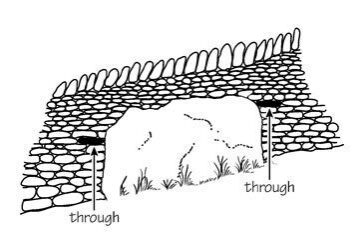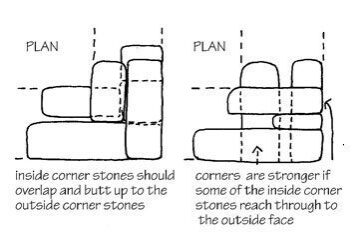Printed from: https://conservationhandbooks.com/dry-stone-walling/
Learn to build and repair dry stone walls.
This handbook describes how to construct and repair dry stone walls, stone-faced earth banks, retaining walls and other dry stone features. It is intended to be used by conservation volunteers and others interested in learning the skills of dry stone walling.
It contains everything you need to know about dry stone walling - the history of walls in the countryside, how to build or restore a dry stone wall, as well as their conservation value. Loads of information about dry stone wall styles and features across the UK and Ireland, and much more.
Building with dry stone is one of the earliest skills developed by people, used for building shelters, fortifications, burial mounds, ceremonial structures and animal enclosures.
Dry stone walling is so durable because it contains no mortar to crack and fail, but is held together merely by the weight of stone, and by the skill of the builder who selected and fitted the stones together.
Dry stone walling subjects
Background info

Loads of background information - dry stone wall history, conservation, dating, the law, flora and fauna, safety, tools and equipment.
Building a wall

Clear, step-by-step instructions on all aspects of building a dry stone wall - stone selection, walling procedure, building on slopes, and much more.
Features & furniture

Design and construction of wall furniture and features such as smoots, stiles and gates, cairns, pillars, arches, steps, seats and so on.
The content
The original, printed TCV handbook "Dry Stone Walling, a practical handbook" contained 160 pages. Every one of these pages is included in these digital versions. Your subscription would also give you unlimited access to all of our practical conservation handbooks.
There are over 2,000 illustrations covering all 10 handbooks. These will be constantly added to and improved. We will also add photographs and videos to bring the pages to life.
About
The Practical Handbook series was started in the 1970s, with most of the original titles remaining in print throughout, and new titles being added over the years. There has been a rolling programme of revision with most printed Handbooks now in their umpteenth edition.
